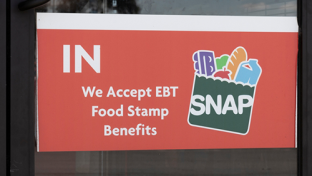Food Insecurity On the Rise: Report

The Economic Research Service (ERS) arm of the U.S. Department of Agriculture (USDA) is out with its report on "Household Food Security in the United States in 2022", which shows that food access remains an issue among many Americans. According to the ERS survey, although 87.2% of households in this country are food secure, 12.8%, or 17 million households, are food insecure.
The food insecurity numbers are up “significantly” from the previous year, ERS notes. In 2021, 10.2% of households, equating to 13.5 million households, were food insecure. Moreover, the prevalence of very low food security rose from 3.8% to 5.1% on a year-over-year basis. “In this more severe range of food insecurity, the food intake of some household members was reduced, and normal eating patterns were disrupted at times during the year because of limited resources,” the report noted.
[Read more: “Instacart Expands Grocery Accessibility for Seniors”]
This year’s ERS food security research also showed that more than half – 55% – of food-insecure households reported that they take part in one or more government nutrition assistance programs, including the Supplemental Nutrition Assistance Program (SNAP), the Special Supplemental Nutrition Program for Women, Infants, and Children (WIC) and the National School Lunch Program.
Grocery stores remain crucial food sources for U.S. households. According to the survey, most households buy much of their food from grocery stores, supplementing those purchases with products from restaurants, vending machines, school or childcare programs and other channels
ERS data shows that the typical U.S. household spends $70 per person a week for food. The impact of inflation showed up in the findings, too, as the typical household spent 12% more on food than the cost of the USDA’s Thrifty Food Plan (TFP) model.
There were also some geographic differences in food spending, with outlays lower in non-metropolitan areas and in the Midwest and South. Demographically, median food expenditures relative to the cost of the TFP were lower for households with Black, non-Hispanic and Hispanic reference people than for those with white, non-Hispanic reference persons. “This pattern is consistent with the lower average incomes and higher prevalence rates of food insecurity for these racial and ethnic groups,” the report concluded.
"The 2022 'Household Food Security in the United States' report is a sobering reminder that, while the vast majority of Americans are able to affordably feed themselves and their families, too many of our neighbors struggle to put healthy food on the table,” said U.S. Agriculture Secretary Tom Vilsack. “These findings are unacceptable, yet the report is the latest piece of evidence that as the pandemic began to wane in 2022, another public health concern — food insecurity — increased. The experience of the pandemic showed us that when government invests in meaningful support for families, we can make a positive impact on food security, even during challenging economic times.”







